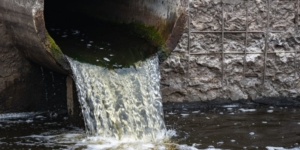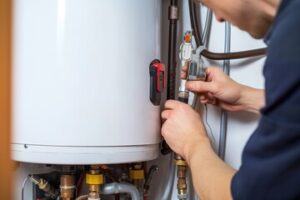Liquid Waste Removal Perth is a valuable service for residential and commercial businesses alike. Effectively managing liquid waste, such as sewage effluents and dangerous chemicals, can prevent environmental harm.
Water pollution caused by improperly managed liquid waste can upset the balance of aquatic ecosystems, kill marine organisms, and make people ill. It can also seep into groundwater and surface water sources, poisoning people who drink it.

The liquid waste disposal industry is a fast-growing sector, as more manufacturing and industrial facilities generate toxic or hazardous effluents. When these are not properly treated and disposed of, they can contaminate water sources, harm plant life, and negatively impact human health. This can lead to fines, citations, or even facility closure.
Liquid waste can be created in a number of ways, including through the natural excretion of humans and animals, an operation at a factory, plant, or construction site, or natural disasters such as hurricanes or floods. Whatever the source, it must be treated to prevent contamination of waterways, soil, and groundwater.
While there are many different types of liquid waste, most can be divided into three main categories: sewage, storm water, and industrial effluents. While some may only need light treatment, others require more aggressive treatment processes to make them safe for the environment or human consumption.
Liquid waste treatment begins with sedimentation, which allows solids to settle into a sludge that can be skimmed off the top. This is the first step in sewage and storm water treatment, and it can be done through either pressure or centrifugal force.
Another important step in treating liquid waste is oxidation, which reduces the level of contaminants by converting them into non-toxic byproducts. This process can also be used to remove harmful bacteria and heavy metals from drinking water.
After treatment, the waste is typically deposited in an approved dump area. It is important to choose a company with experience in this field, as improper disposal of liquid waste can harm the environment, pollute the air and water and even cause serious injuries or illnesses to people and animals.
The demand for liquid waste management companies is driven by factors such as increasing consumer awareness of the need to protect limited natural resources and the introduction of rules advocating improved management procedures. The growing global population is also driving the need for efficient liquid waste removal and management.
Treatment
Businesses that generate waste liquids – whether it be sewage effluent from factories or kitchens, hydrocarbon oil and solvents, wash waters or spray booth waste – must dispose of them in a safe and compliant manner. This isn’t just a legal requirement, but one which helps to safeguard the environment.
Many liquids pose a significant danger to the environment, so it’s important that they are treated properly before being disposed of. For example, improper disposal can cause water pollution, which can disrupt ecosystems and harm marine life. It can also seep into groundwater, contaminating drinking water supplies. This can have a major impact on people’s health, with contaminated water causing skin irritations and respiratory issues.
Liquid wastes may need to be reprocessed to make them suitable for recycling or landfill. This can include chemical treatments and physical treatment techniques such as centrifugation or sedimentation. This can make them more sustainable for future use, and also help to reduce the amount of waste generated.
Using advanced technologies can improve efficiency in waste management, reducing costs and environmental impact. It can also boost compliance, ensuring all liquid waste is handled according to regulations and helping businesses avoid penalties and reputational damage.
Some liquid wastes aren’t suitable for landfill, so they need to be disposed of via land application or deep well injection. These are more environmentally-friendly methods of disposal, and can be used for nonhazardous liquid waste. For hazardous wastes, this can be done by discharging them into deep underground wells, which are isolated from the water supply and surrounding environment.
It’s vital that companies understand the different types of liquid waste they produce, as this can help them to prepare for storing and treating it correctly. This will prevent the risk of contamination, which can cause health risks and even environmental disasters. For example, sewage effluent can contain dangerous microorganisms that can harm people and wildlife, while solvents from factories can contain chemicals that can be harmful if inhaled. By taking the time to understand the nature of their own waste streams, businesses can prepare for collection and treatment services, ensuring they comply with stringent environmental regulations.
Disposal
The disposal method you choose for liquid waste will depend on a number of factors, including the type of liquid waste you’re dealing with and the type of landfill you use. Some methods, such as incineration and underground disposal, are more environmentally friendly than others. The type of soil at the disposal site can also affect your choice, as softer or looser soils may allow liquids to move more easily. The type of landfill you choose will also have an effect on your disposal costs.
Most businesses generate some form of liquid waste, which must be disposed of properly to prevent environmental damage and health risks. This includes wastewater from industrial facilities, sewage from homes and other buildings, and the chemical waste that is produced during manufacturing processes. Many of these substances are toxic to plants, animals, and human beings, so they must be disposed of safely and with care.
Ignoring ethical liquid waste disposal has long-term catastrophic effects for the environment and its inhabitants. While there are a few different ways to dispose of liquid waste, it is important to make sure that you’re following the proper procedures. You must have a system in place to collect and store the waste, as well as a plan for how you’re going to transport, treat, and dispose of it.
Liquid waste can include anything from trapped rainwater to discarded cleaning products. Some of these substances can be re-used in other products, but others will need to be treated before being sent off for disposal. If you’re not sure how to handle your waste, seek the assistance of professionals.
For example, healthcare facilities must carefully manage their medical waste disposal. Failure to do so can lead to fines and legal issues. Investing in septic tank services and other waste management solutions will help you maintain high health standards and keep your employees safe.
The most common source of liquid waste is sewage, which comes from both residential and commercial sources. Sewage is typically flushed into municipal sewage systems or stored in septic tanks. Liquid waste can also be generated by industrial sites, such as petroleum refineries and pharmaceutical manufacturing. This waste is typically rich in chemicals and heavy metals, which can be dangerous to both people and the environment.
Recycling
Businesses generate many different types of liquid waste, and it’s important that they dispose of it properly. Doing so prevents environmental damage and helps protect human health. It also ensures that employees work in a safe environment, which increases productivity. Liquid waste specialists can help businesses with their waste management needs.
Liquid waste can be any type of liquid substance that is unwanted or no longer needed. This can include sewage, oil, chemicals, and other liquid byproducts of industrial processes. It is also possible that some of this waste may be hazardous to the environment or human health. Managing this waste requires special treatment and disposal methods.
One way to reduce the amount of liquid waste that is produced is to encourage recycling. This can be done by providing clearly labeled bins for different types of liquid waste, and educating employees about what can and cannot be flushed or poured down the drain.
Nonhazardous liquid waste can be recycled by turning it into organic fertilizer. This can be done by removing the water from the waste and then using natural microorganisms to break it down into useful nutrients for plants and soil. Nonhazardous liquid waste that can’t be recycled or reused is disposed of in landfills.
In addition to reducing the amount of liquid waste that is produced, implementing recycling practices can save businesses money on disposal costs. This is because the cost of disposing of liquid waste can be significantly higher than the cost of recycling and reusing it. Additionally, businesses can avoid fines if they follow strict guidelines when disposing of their liquid waste.

